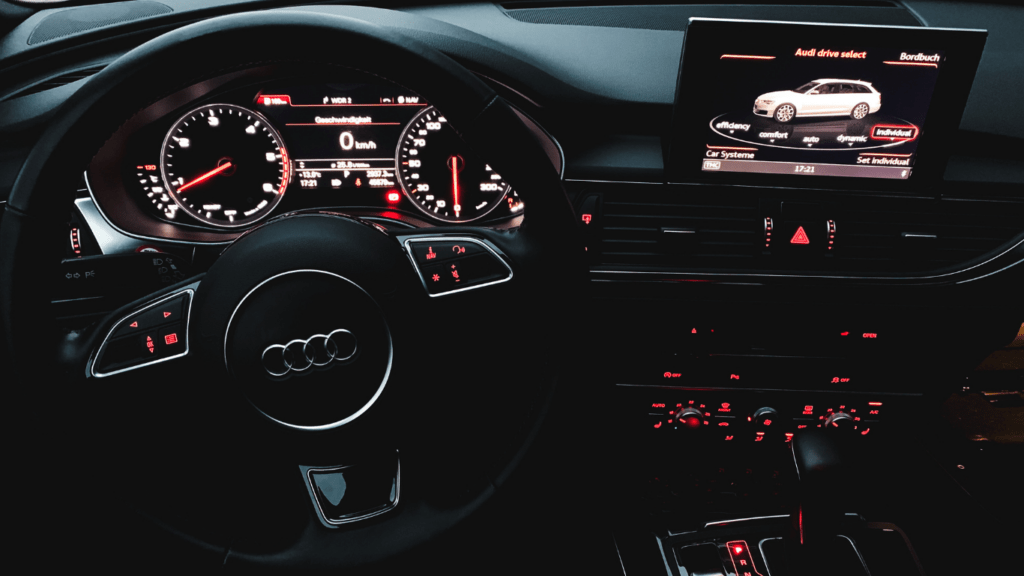Overview of Modern Infotainment Systems
Modern infotainment systems have drastically changed how we interact with our vehicles. They now offer a suite of features like smartphone integration, advanced navigation, and voice-activated controls. These systems aim to provide a seamless and enjoyable driving experience by integrating various technologies into the vehicle’s dashboard.
Key Features
- Smartphone Integration: Systems such as Apple CarPlay and Android Auto allow drivers to mirror their smartphones. This feature supports seamless access to apps, music, and navigation.
- Voice-Activated Controls: Drivers can keep their hands on the wheel using voice commands to control navigation, make calls, and play music. Examples include Alexa, Siri, and Google Assistant integration.
- Touchscreen Interfaces: Infotainment systems increasingly come with large touchscreens. These displays often support multi-touch gestures like pinching and swiping for easy navigation.
- Real-Time Navigation: Advanced GPS systems provide real-time traffic updates, detour suggestions, and alternate routes. These services often integrate with services like Waze and Google Maps.
- Multimedia Playback: High-quality audio systems and compatibility with various media formats enhance entertainment options. Many systems support streaming services like Spotify and Pandora.
Technological Integration
- Artificial Intelligence: AI plays a significant role in personalizing the driving experience. Examples include learning driver preferences and providing predictive suggestions.
- Over-the-Air Updates: Manufacturers can push software updates directly to vehicles, ensuring that infotainment systems stay up-to-date without the need for dealer visits.
- Internet Connectivity: Built-in Wi-Fi hotspots and 4G/5G connectivity enable internet access on the go. This feature supports streaming, browsing, and downloadable apps.
User Experience
Infotainment systems are designed to be intuitive and user-friendly. Haptic feedback, customizable interfaces, and minimalistic designs contribute to easier interaction. Developers focus on reducing driver distraction by integrating steering wheel controls and heads-up displays (HUDs). These systems enhance safety while providing a rich array of functionalities.
Future Trends
The future of infotainment systems includes more advanced features. Augmented reality (AR) navigation, biometric access, and even greater AI integration will likely become standard. Manufacturers are also working towards more adaptive and personalized experiences using machine learning.
Modern infotainment systems are integral to contemporary vehicles. They combine entertainment, navigation, and connectivity, transforming the driving experience. These advances align with industry trends and consumer demands, reflecting the direction of automotive innovation.
Key Features and Innovations

Modern car infotainment systems boast several advanced features that enhance the driving experience.
Voice Control and Integration
Voice control systems enable drivers to operate functions hands-free. Systems like Amazon Alexa and Google Assistant provide seamless voice interaction. Examples include controlling music playback, setting navigation destinations, and adjusting climate settings. These integrations minimize driver distraction, ensuring a safer driving environment while keeping the user connected and in control.
Advanced Navigation Systems
Navigation has seen significant advancements. Real-time traffic updates, alternate route suggestions, and augmented reality overlays improve the driving experience. Systems now offer lane guidance and predictive navigation. Personalized recommendations use AI to suggest points of interest based on previous behavior, enhancing convenience.
Connectivity Options
Infotainment systems must support various connectivity options. Bluetooth, Wi-Fi, and USB ports are standard. Apple CarPlay and Android Auto offer seamless smartphone integration. Over-the-air updates ensure systems stay current, providing access to the latest features and improvements. Internet connectivity allows for streaming services and online browsing, ensuring a connected journey.
Entertainment and Media Capabilities
Modern infotainment systems enhance entertainment with numerous options. High-definition touchscreens provide intuitive control over media. Platforms support streaming services like Spotify and Netflix, enabling access to vast libraries of music, movies, and shows. Multi-device pairing lets passengers enjoy personalized content on the go.
These key features and innovations in car infotainment systems reflect the dynamic nature of automotive technology, ensuring an enriched and safe driving experience.
Major Players in the Market
Several companies lead the innovation in car infotainment systems. Each offers unique features that elevate the driving experience.
Apple CarPlay And Android Auto
Apple CarPlay and Android Auto dominate the market by providing seamless smartphone integration. CarPlay transforms the car’s touchscreen into an iPhone interface, enabling access to apps, music, and navigation. Android Auto offers similar functionality for Android users. Both systems support voice commands through Siri and Google Assistant and deliver real-time traffic updates via Apple Maps and Google Maps.
Tesla’s Infotainment System
Tesla’s infotainment system sets itself apart with a vertically integrated approach. The system features a large central touchscreen that controls nearly all vehicle functions, from navigation to climate control. Over-the-air updates keep the software current without dealership visits. Tesla’s system also incorporates entertainment options like streaming services and games, enhancing the passenger experience during long trips.
Other Notable Systems
Other automotive manufacturers have developed impressive infotainment systems that cater to diverse user needs. BMW’s iDrive offers a rotary controller, touchscreen interface, and voice recognition. Mercedes-Benz integrates the MBUX system, featuring AI-driven personal assistants and high-resolution displays. Ford’s SYNC 4 provides similar functionality, including wireless updates, voice commands, and integration with both CarPlay and Android Auto. Each system emphasizes connectivity, user convenience, and minimal driver distraction.
User Experience and Interface Design
Infotainment systems continue to evolve, placing user experience and interface design at the forefront of their innovation. Enhancing how drivers interact with their vehicles is key to these advancements.
Touchscreen vs. Physical Controls
Touchscreens dominate modern infotainment systems due to their versatility. Large, high-definition screens handle everything from navigation to media playback. Capacitive touchscreens support multi-touch gestures, making interactions smooth and intuitive. However, some car manufacturers maintain physical controls to enhance safety. Knobs and buttons provide tactile feedback, crucial for tasks like volume adjustment where precision matters.
BMW’s iDrive system, as an example, balances touch and physical controls efficiently. The combination of a rotary dial and touchscreen offers flexibility and minimizes distraction. Similarly, Mazda’s Commander control integrates a knob that complements its touchscreen display, ensuring a safer and more user-friendly experience.
Customization and Personalization
Modern infotainment systems focus heavily on customization. Users adjust settings to fit their preferences, creating a personalized driving environment. Profiles store everything from seat positions to climate control preferences. AI-driven systems adapt over time, learning individual habits to offer suggestions tailored to each driver.
Tesla leads with its extensive customization options. Drivers personalize nearly every aspect of the interface, from display themes to app layouts. Mercedes-Benz’s MBUX system features AI that memorizes driver preferences, optimizing navigation routes and media recommendations. Customization enhances usability, making the driving experience more enjoyable and uniquely tailored.
Future Trends and Predictions
Modern infotainment systems continually evolve, and new trends set to shape the industry are on the horizon.
AI and Machine Learning
AI and machine learning are increasingly vital in enhancing infotainment systems. AI analyzes user preferences to personalize content and optimize navigation routes based on historical data. Machine learning algorithms improve voice recognition accuracy, making voice commands seamless and reducing driver distraction. Automakers like Tesla and BMW integrate AI to predict and adapt to driver behavior, creating a smarter and more intuitive driving experience. Advanced systems could automatically adjust seat settings, climate control, and multimedia preferences.
Augmented Reality Integration
Augmented reality (AR) brings a futuristic touch to car infotainment. AR enhances navigation systems by overlaying driving directions onto the windshield, offering real-time, heads-up displays that keep drivers’ eyes on the road. Companies like Mercedes-Benz and Audi explore AR to provide immersive, interactive maps and hazard warnings. AR can also deliver contextual information about nearby points of interest, such as gas stations and restaurants, directly on the windshield. This technology reduces distraction by integrating vital data into the driver’s line of sight.




